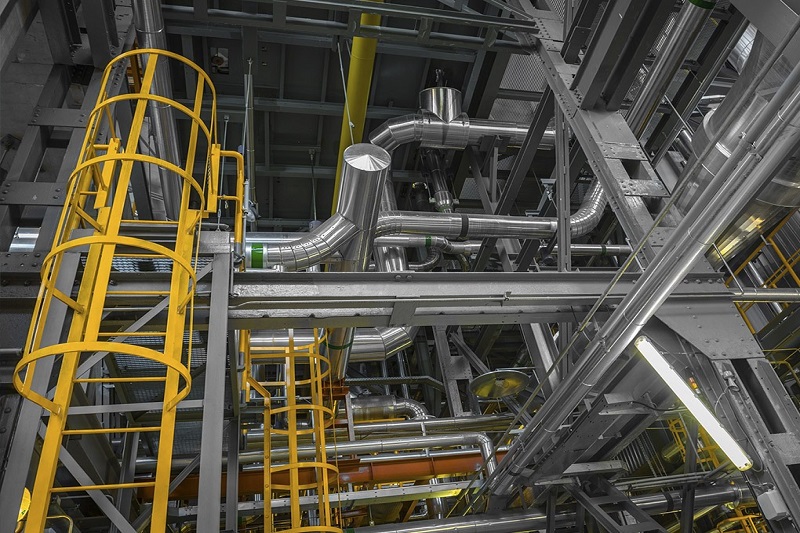Ladders are an invincible tool in industrial workspaces, construction sites, warehouses, factories, etc. It is not that these ladders have a single purpose. These come with a lot of utilities, from accessing heights, and roofs, to loading and unloading goods, surveillance of machinery at heights, reaching heights for repairs or constructional needs or even to operate machines on a routine basis.
However, the most common risk when climbing at a greater height is the chance of falling. Ladders attached to vertical heights like towers, multi-stored buildings, for rooftop access, etc. pose a general risk. To secure climbs from sudden falls, and to ensure additional balancing and resting support to the climbers, a cage ladder was introduced.

Need for Cage ladder
In cage ladders, the cage is constructed around a vertical ladder encasing the ladder from all sides. According to a previous safety regulation from OSHA, fixed vertical ladders with more than 20’ height and less than 30’ height need to have caging around it. This is a mandatory safety policy. However, cage ladders are often considered as a fall arrest system, which is not true. These cages crafted around fixed ladders, act as mere cages or basket guards which enclose most of the ladder’s climbing space. These are either attached to the ladder itself or sometimes even to the construction.
- These cages are built with the purpose of offering climbers with a ready structural support where they can lean or rest to regain balance and overcome restraints in foothold, instead of struggling midway at a height with no place to rest or lean.
- Many a time ladders are used not just to access the extreme top, but midway as well, where climbers might need additional resting or leaning support to use tools, readjust gears, etc. In such situations these cage ladders can be beneficial.
- Even though it is not a safe practice but climbers climbing down or up the ladder with tools or machines in hand find it difficult to hold on to the ladder with a single hand. The process of leaning back on the cage while climbing down to free up a hand is commonly termed as “back scratchers”.
Precaution with Cage Ladder Usage
According to the standard design of cage ladders, the cage ends at least 7’ to 8’ before the ground where the ladder rests. This is why the climber must be very conscious and alert while attempting to lean forth against the cage. It is important not only to gauge the height at which the climber is located from the ground but also the distance between the ladder and the surrounding cage.
The Occupational Safety and Health Administration (OSHA) has standardized particulars for the use and construction of cage ladders to secure the climbers. Not only does the OSHA mandates a cage to be built around fixed ladders with a height above 20’ but the cage needs to extend at least 42’ over the top rest of the landing. Even at the ground level the cage should be constructed at least 7’ to 8’ above the ground, to save instances of climbers bumping their heads against the cage.
Moreover, since a cage ladder does not fall under a fall arrest safety tool, it is important to ensure that climbers accessing such ladders must use additional fall arrest systems to secure themselves, as a mandatory rule of safety in the workplace.
Visual inspection for greasy substances on rungs of the ladders, and protrusions on the ladder or cage could incur injuries. Moreover, since ladders with heights above 24’ need a mandatory caging and fall protection system, one needs to be trained accordingly to use a fall protection system as well as to maintain the safety rules while climbing at height.


